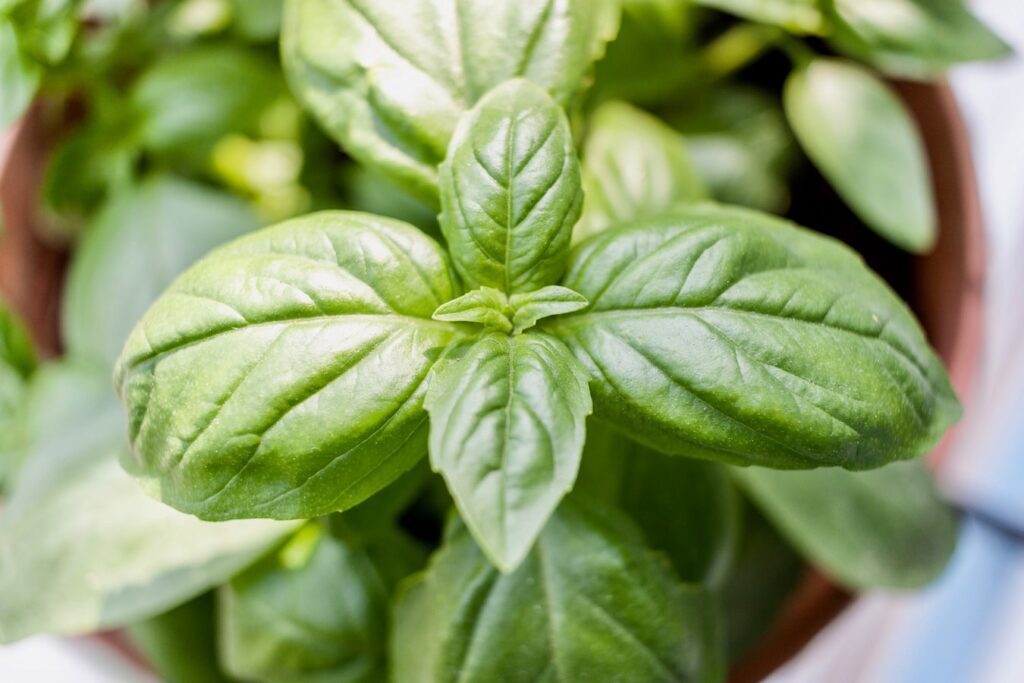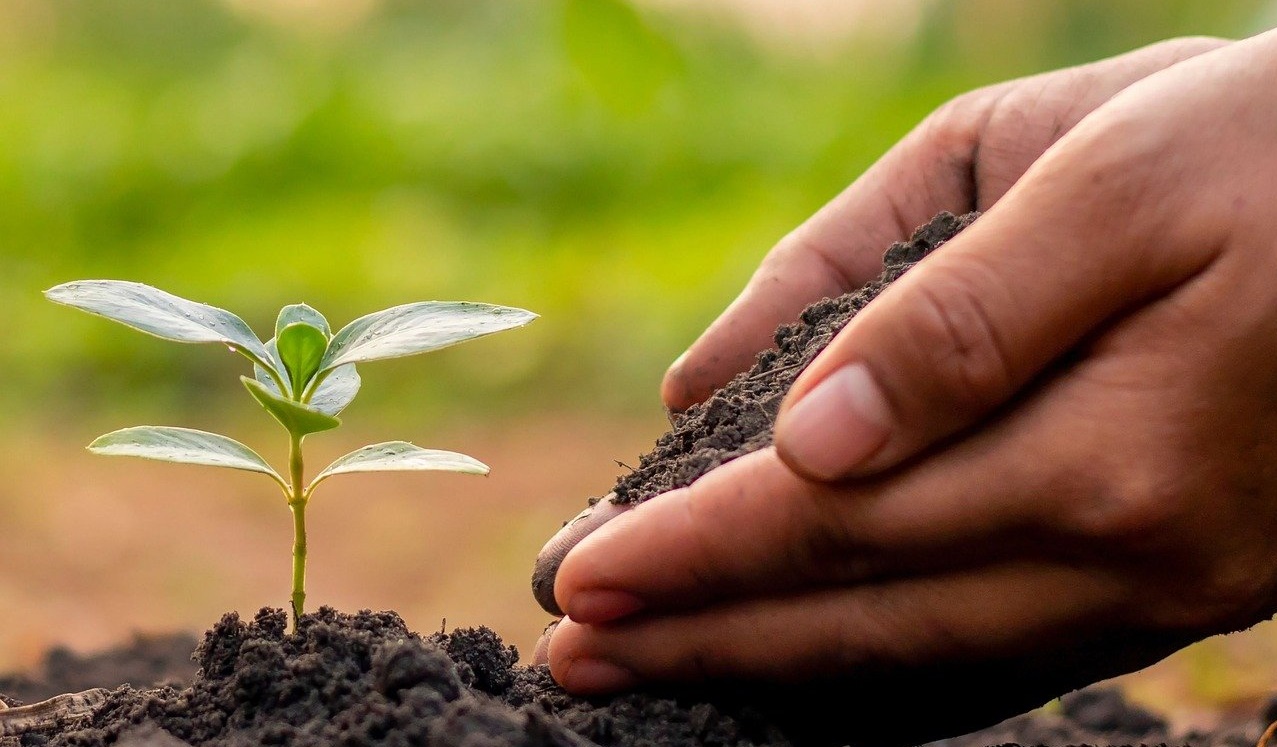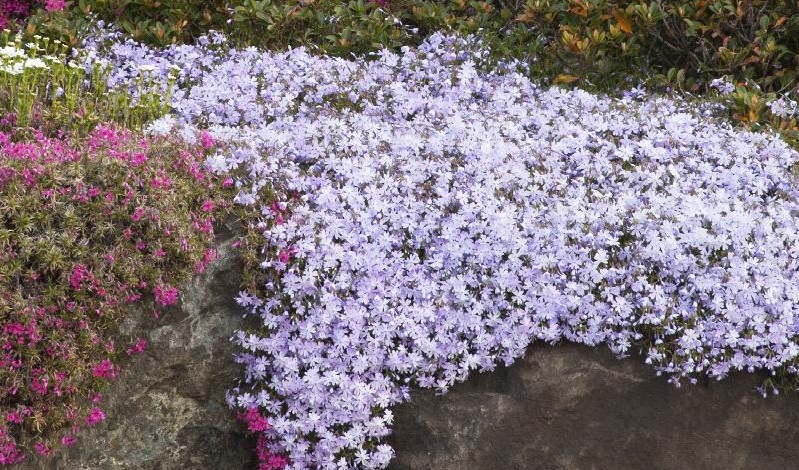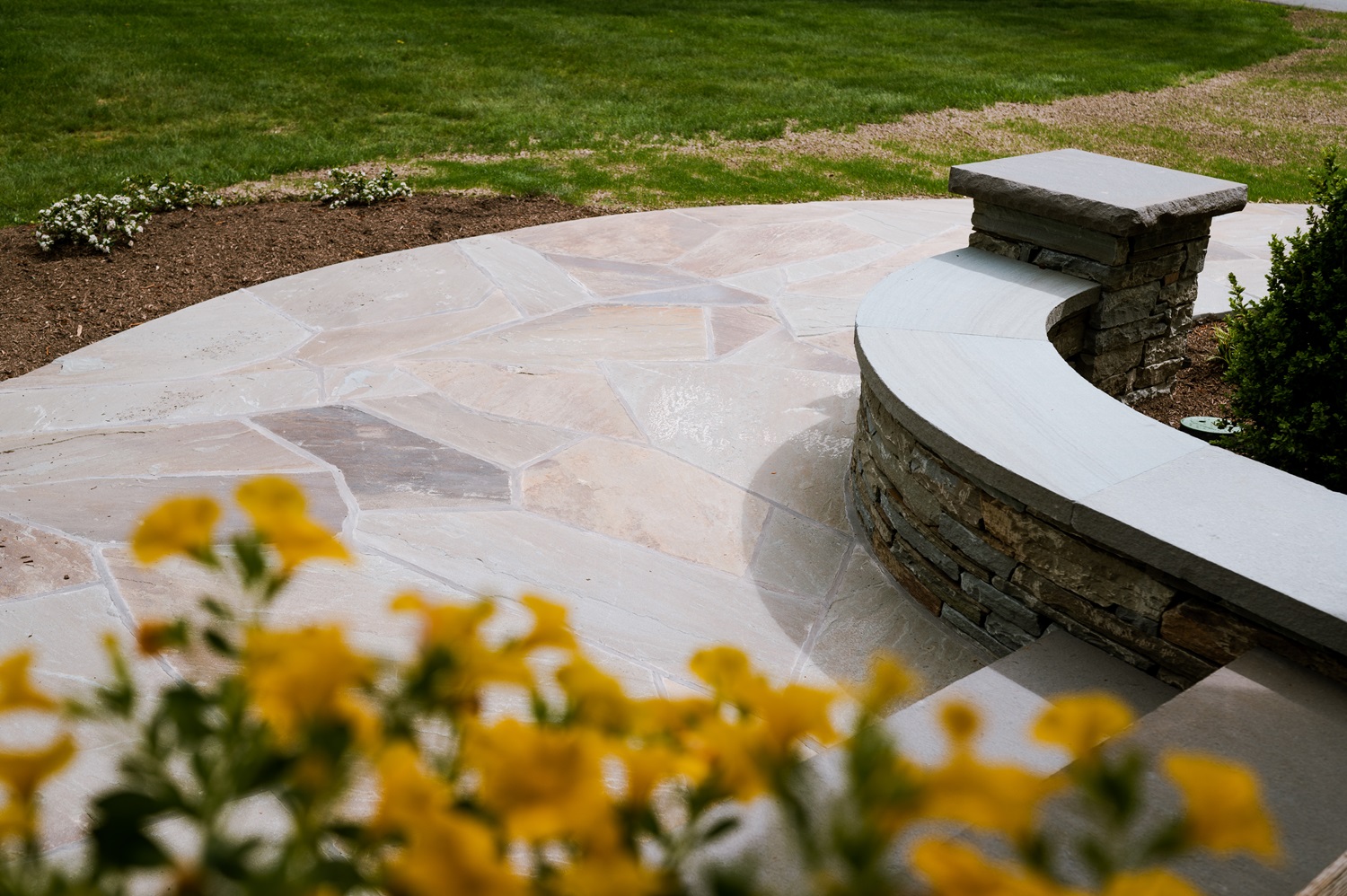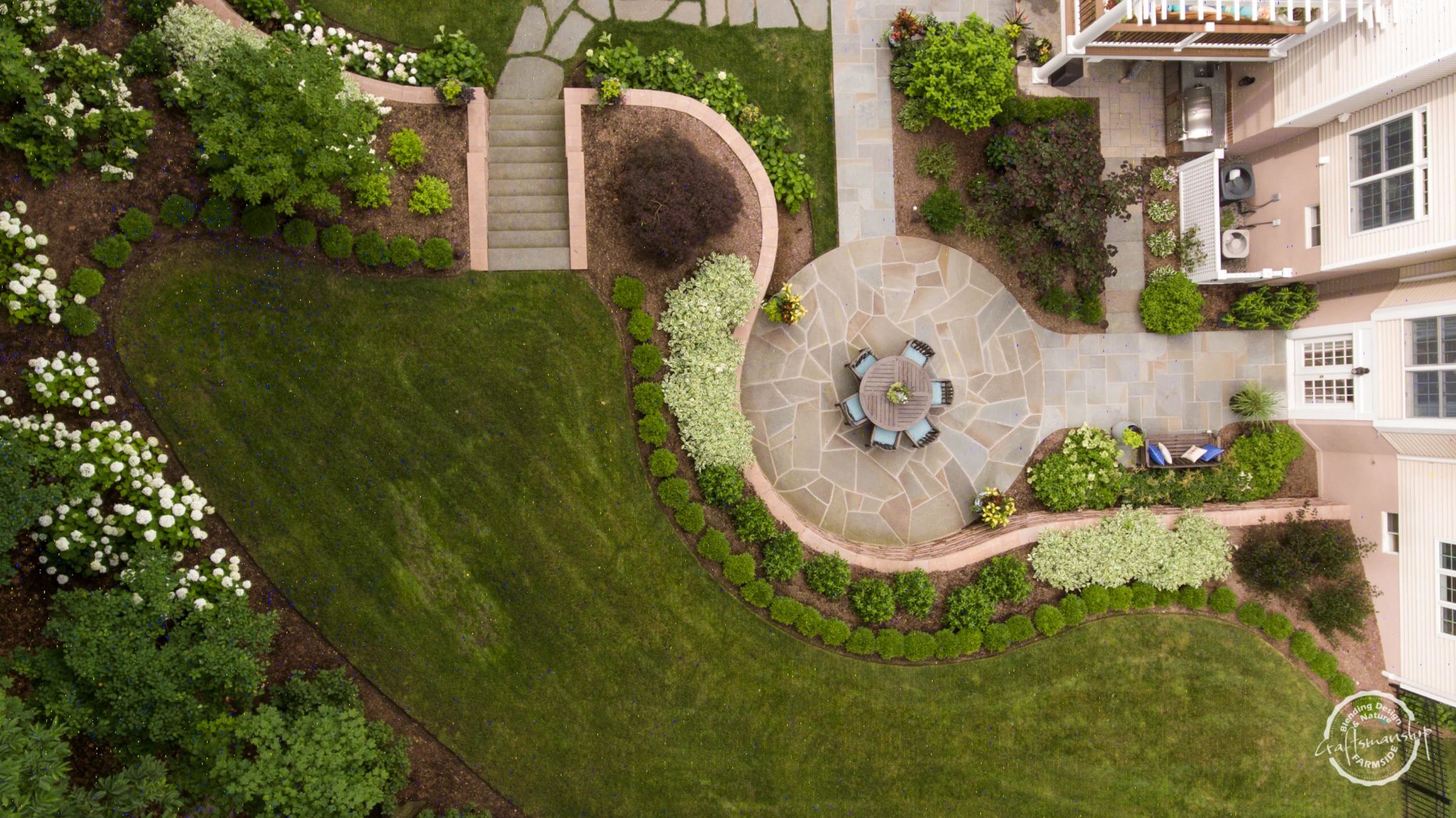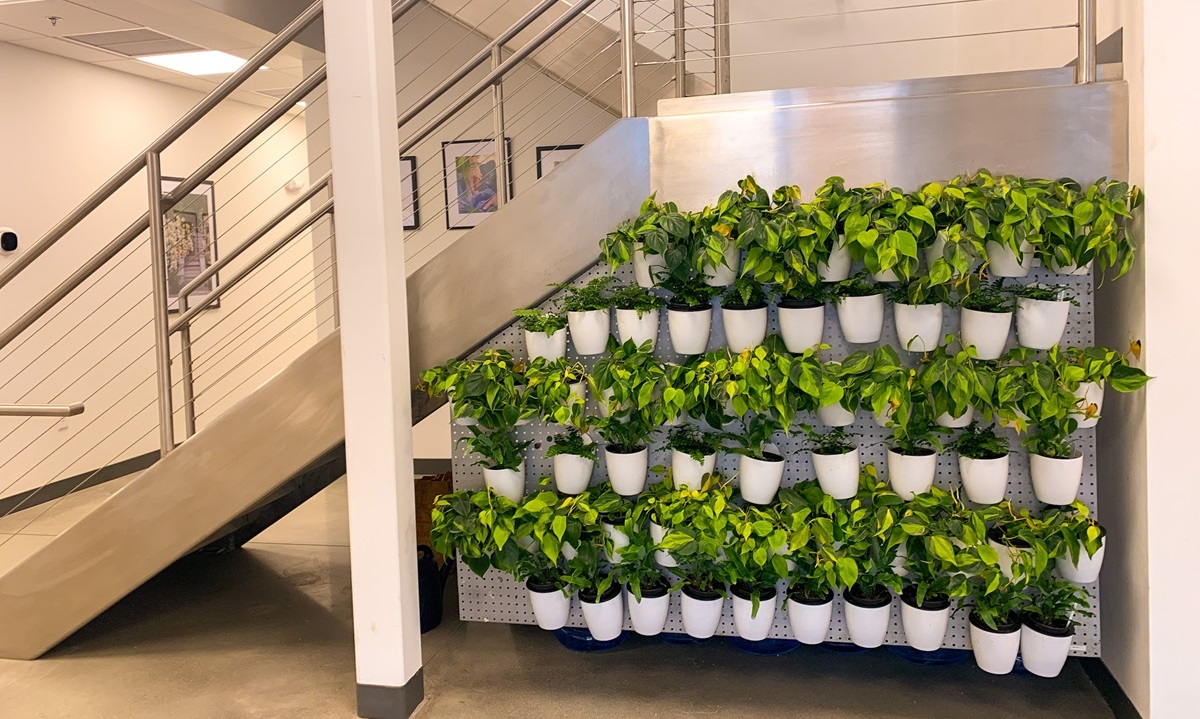When we’re planning landscapes, we think about structure, form, color, balance, but sometimes overlook another aspect that makes any garden delightful: scent.
Although scent is often associated with flowers, it can also come from other parts of the plant such as leaves and branches. Think of how aromatic a pine tree can be in the winter, or how fragrant herbs are when brushed against or crumbled in our hands. Scented geraniums release fragrance through the oils in their leaves. There are plants that release scent when touched, others that do so only at night, and still others when a breeze brushes through them. Many white or light colored flowers that are pollinated by moths are nocturnal – blooming only at night, and releasing their fragrance after the sun sets.
Chemically speaking, a plant’s fragrance comes from the essential oils that are produced when an acid and an alcohol are combined. It is the alcohol component that gives the flower or foliage its characteristic smell. These molecules, called esters, are often heavier than the surrounding air so they are typically found close to the ground.
Here are some fragrant options for your landscape to consider:
Fragrant Shrubs
- Mock Orange – Beautiful, double-bloom white flowers appear against dark green leaves in early to mid-summer, emitting a delightful orange-like scent, even though they are not related to oranges.
- Star Jasmine – A climbing, woody evergreen, Star Jasmine smells sweet, smoky and a little spicy. A cross between ylang-ylang and true Jasmine.
- Lilac – This classic shrub is a favorite for it’s gorgeous clustered blooms that range in color from snow white to deep purple, and it’s heady, sweet scent.
- Gardenia – Stunning white flowers against deep, shiny green leaves make this shrub as beautiful as it is fragrant.
- Korean Spice Viburnum – This deciduous shrub produces large clusters of spicy-scented, pink flowers that fade to white. Bright red berries fade to black in fall. Foliage becomes red and burgundy in autumn.
- Clethra Sugartina – This summer flowering shrub produces fragrant, snow-white flower spikes that look stunning against its dark glossy foliage. It blooms even in shady areas and is tolerant to road salt.
Fragrant Night Blooming Flowers
- Evening Primrose – Bold bright color plus sweet fragrance make these blooms a must for the garden.
- Moon Flower – This annual vine (Ipomoea alba) grows to an impressive 15 feet, unfurling four-to six-inch-wide fragrant, white blooms.
- Four O’Clocks – Like the name implies, these cheery blooms come in white, pink, red or yellow, and open their blooms in the late afternoon, releasing a delightful, spicy scent.
Fragrant Flowers
- Scented Geranium (Pelargonium graveolens) – An annual with attractive blooms whose scent comes from the tiny glands at the base of the plant’s leaf hairs. Crushing the leaves releases the oil and scent, which, depending on the variety, can smell like apricot, lemon, mint, strawberry or apple.
- Lilly of the Valley – Tiny, bell-like flowers emit a clean, sweet fragrance that has been beloved by many for centuries.
- Roses – While there are countless varieties that smell lovely, particularly fragrant options include Lady Emma Hamilton, an English Rose with a fruity scent and tangerine color, Munstead Wood, a dark crimson English Rose that smells like blackberry, and Honey Perfume, a floribunda with a spicy-sweet scent and apricot petals that turn to cream as they age.
- Shrub Roses – Are perfect for creating a beautiful, fragrant fence line or anywhere in the landscape. Shrub roses are extremely hardy, provide summer-long color and offer repeat blooming. Some particularly fragrant varieties include The Poet’s Wife, The Ancient Mariner, Graham Thomas and Carding Mill.
Fragrant Trees
- Linden Tree – Small, white and yellow blossoms give the tree its fragrant aroma – bright and sunny with hints of honey.
- Japanese Flowering Cherry Tree (Yoshino tree) – With its clouds of pink blossoms, cherry trees are a harbinger of spring in our area, and give off a delicate almond scent when warmed by the sun.
- Apple – Apple trees (Malus) – Are true multi-taskers, yielding fruit as well as marvelously fragrant flowers.
- Canadian Hemlock (Tsuga Canadensis) – Is a conifer whose fragrance comes from the evergreen needles of its branches.
- Balsam Fir – One of the most fragrant of conifers, the Balsam Fir offers the fresh scent of pine we associate with Christmas trees.
- Japanese Tree Lilac – Larger than shrub lilacs that blooms a little later. It produces large clusters of small creamy-white, fragrant flowers.
Fragrant Herbs
- Lavender – The most fragrant Lavender plants are the Lavandin (Lavandula x intermedia). Several cultivars of English Lavender (Lavandula angustifolia) are also prized for their delightful scent.
- Thyme – There are many varieties of thyme, which is part of the mint family and related to oregano. Common thyme, used in cooking, is beautifully fragrant, as is Lemon Thyme, which has a clean, citrus scent and flavor.
- Basil – Also comes in a variety of cultivars, with flavors and scents ranging from citrusy Lemon Basil to the popular Sweet or Genovese Basil we use for pesto, even a licorice-like flavor of the small-leafed Thai basil.
- Rosemary –’Tuscan Blue’ (Rosmarinus Officinalis) is a highly fragrant variety of rosemary, with dense, blue-green foliage that is also one of the best varieties for topiaries.
Photo credit for all images contained in the post – Unsplash

